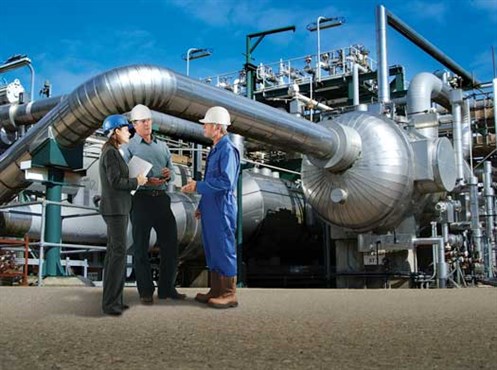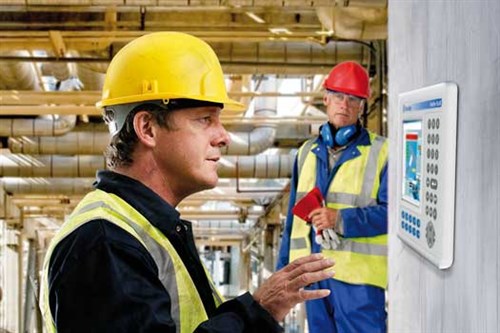Uncover optimization opportunities in shale gas processing
The shale boom unleashed a flurry of new construction of gas processing plants in the US. With it came a major surge in gas processing capacity: from 77 Bcfd in 2009,1 to 83 Bcfd in 2013, to an estimated 95 Bcfd in 2017.2
Now, with high capacity and a lull in oil prices, construction has slowed substantially. Focus is shifting from building new plants to the long-term operation of recently built facilities. In particular, a desire exists to identify and capitalize on optimization opportunities that can boost plant productivity and maximize profitability (Fig. 1). However, knowing how to seize such opportunities first requires an understanding of how the rapid buildout of these plants has unfolded over the last 10 yr.
 |
|
Fig. 1. Today, there is a shift to identify and capitalize on optimization opportunities that can boost plant productivity and maximize profitability. |
Gas production accelerates process plant buildout. Natural gas production far outstripped gas processing capacity during the shale boom. This pushed companies to start up new processing plants as quickly as possible, in places from Ohio and West Virginia to Oklahoma and Texas. It also pushed companies to rethink the construction process used for deploying new plants.
The traditional approach of designing and building plants from the ground up took several years. This approach proved too time-consuming to meet demand during the shale boom. Instead, companies opted for a modular approach to construction, reducing the build cycle time to as little as 12 mos–18 mos. The shorter build cycles helped plants more quickly catch up with production. However, the short-term benefits came with challenges that affected the operation of the plants.
For example, the modular approach involved the use of multiple skids from multiple vendors. One vendor might have provided the inlet compression equipment; another, the treating equipment; and still another, the refrigeration and process equipment. This put a burden on workers to learn how to operate a wide variety of equipment that often lacked a common look and feel. It also created integration and interoperability challenges, with different skids having different architectures and programming.
The ongoing need to build new plants meant that most personnel were primarily dedicated to building the next new plant. As a result, they had little time or resources to devote to optimizing operations in each plant before moving on to the next one. This also meant that data-collection systems were not deployed to their maximum usefulness.
Consequently, many modern gas processing plants experience challenges in accessing and analyzing data. As a result, they may not be able to fully realize the potential of their own information.
Identifying optimization opportunities. The modular construction approach forced many plants to perform below their maximum potential. However, with the pace of buildout now having slowed, significant opportunities exist to improve efficiencies and profitability in gas processing plants across the US.
Some opportunities are immediately visible. They include process upsets, equipment failures and process bottlenecks. Other opportunities require an investigative effort to be identified. Any of these optimization opportunities can offer more potential for increased recoveries, energy savings and expanded throughput. Companies can use information-enabled systems, tools and technologies in a connected enterprise to turn these opportunities into financial success (Fig. 2).
 |
|
Fig. 2. Gas processing plants can use information-enabled systems, tools and technologies in a connected enterprise to turn productivity and optimization opportunities into financial success. |
Developing and supporting a culture of optimization. It is not just a matter of upgrading infrastructure; in many cases, a cultural shift must occur. However, infrastructure can be a key component in the successful fostering of a new culture of optimization.
For example, key decision-makers will need to be convinced that any optimization effort can recoup its cost and deliver long-term value. Plant workers must be empowered with the appropriate tools to ensure that the necessary changes are smoothly and fully implemented, and that their expected value continues to be realized. The bottom line is: Significant opportunities exist, but efforts to capitalize on them must be carried out with care and diligence.
Key questions. Optimization opportunities are unique to every plant and are based on factors like existing infrastructure and business needs. To help uncover the opportunities that are specific to each plant, companies should work to identify their technology and data gaps. They can do this by answering three key questions:
- How extensively does the automation system measure the process? Amid the construction frenzy of the last 10 yr, some companies purposely limited the number of sensors or inputs built into a plant’s automation system. The idea was to help save time and money during construction. However, such short-term gains present long-term challenges. In this case, the challenge is a reduced ability to leverage the Internet of Things (IoT) to monitor and improve production.
By deploying internet-connected sensors on critical process equipment, such as pumps, compressors and process units, companies can begin to collect real-time data for virtually any aspect of their operation. They can then use this data to better understand their operations—whether it is equipment performance and health, key performance indicators or even worker behaviors—to inform optimization strategies. - How is data being recorded? Too often, plants have an overly basic system in place for recording data. Personnel may use the data they collect for compliance-reporting purposes, but otherwise, they do little else with it.
Plantwide optimization is severely challenged using this limited data approach. Instead, a robust and reliable historian capable of high-speed data capture is needed to collect and record data produced by hundreds or thousands of sensors.
Modern historians can collect up to 2,500 data points from multiple local and remote controllers, and have collection speeds as fast as 10 milliseconds. Such capabilities are necessary for monitoring effective equipment usage and performance, and for driving continuous improvements. Historical data can also help speed up troubleshooting during a downtime event, or support predictive maintenance strategies that help eliminate downtime in the first place. - What tools are available to visualize and analyze data? Gaining access to data is one matter; being able to easily understand it and act on it is another. In this regard, visualization and analytical tools are critical. These tools take raw machine and sensor data and contextualize it into clear, easy-to-understand production information for operators and decision-makers.
Users can also use visualization to compare data sets produced by separate systems. They can deliver information through multiple channels, which helps ensure that workers receive information on their preferred devices. This also helps connect plant workers with colleagues and consultants across long distances for greater collaboration.
Creating cultural change. The greatest hurdle to implementing cultural change can be justifying the required investment, even if specific optimization opportunities are identified. However, optimization efforts will go nowhere if key decision-makers—whether they are upper-level managers or outside investors—are not sold on them.
Given that a plant’s infrastructure may be in a state where it cannot fully support the desired optimization efforts, the best place to start may be with two simple tools: a pencil and a clipboard. It can be a tedious process, but manually collecting data on the improvements—and the savings—that an optimization effort can deliver is often the best way to justify a proposed investment.
Another challenge is seeing the optimization effort through to its desired results. For example, if operators do not understand a new technology, then they either will not be able to apply it to its fullest potential, or they simply may not use it at all. Likewise, if engineers have poor visibility into the system, then they may not make important activities (such as sensor calibration) a priority.
It is critical that a culture of support is in place to perpetuate the optimization project and build support for future efforts. Tactics for building this support include providing training for any new processes or technologies, using visualization tools that provide clear visibility into systems, and developing thoughtful lifecycle plans to keep new technologies running.
Efforts already underway. Today, gas processing plants are already implementing a variety of changes to optimize their operations and improve profitability. Many plants now collect compressor data to improve troubleshooting and overall maintenance strategies. As a result, these plants are seeing improvements in the form of higher uptime and reduced maintenance costs.
A wide spectrum of sophistication in compressor-monitoring systems exists. Simple systems record basic parameters of run time, temperature, pressure and maintenance. More sophisticated systems add vibration monitoring and analysis, requiring a respective improvement on the data-collection infrastructure.
A few companies are delving into the realm of advanced analytics. This field promises unique and valuable improvements, including new infrastructure like the cloud and big-data software.
One processing plant in Texas recently implemented model predictive control (MPC) software to improve production. This project took several years to clear cultural and infrastructure roadblocks before it was approved and implemented. However, once implemented, the increased throughput returned the project investment in only a few months.
From nicety to necessity. The technologies required for optimization efforts, from process-measuring sensors to advanced visualization and analytics tools, should not be seen as luxury or discretionary items. Rather, they should be considered necessary components that every well-run plant should have in place to be competitive.
No better time exists to implement these technologies than the present, as more companies are seeking to maximize plant performance and counter the impact of low oil prices. GP
Literature cited
- US Energy Information Administration, “Natural gas processing plants in the United States: 2010 update,” June 17, 2011.
- US Department of Energy, “Appendix B: Natural gas: Natural gas infrastructure,” 2015.
Jim McTasney leads the Rockwell Automation Oil & Gas initiatives in the Permian basin. He became focused on the midstream industries in the late 1990s with the first development of the Barnett shale play. Starting with a foundation in automation, Mr. McTasney has built on his experience with roles in field service, product development, project management and various sales and marketing positions. He holds a degree in electrical engineering from Texas A&M University in College Station, Texas, and an MBA degree in technology management
from the University of Phoenix in Arizona.




Comments